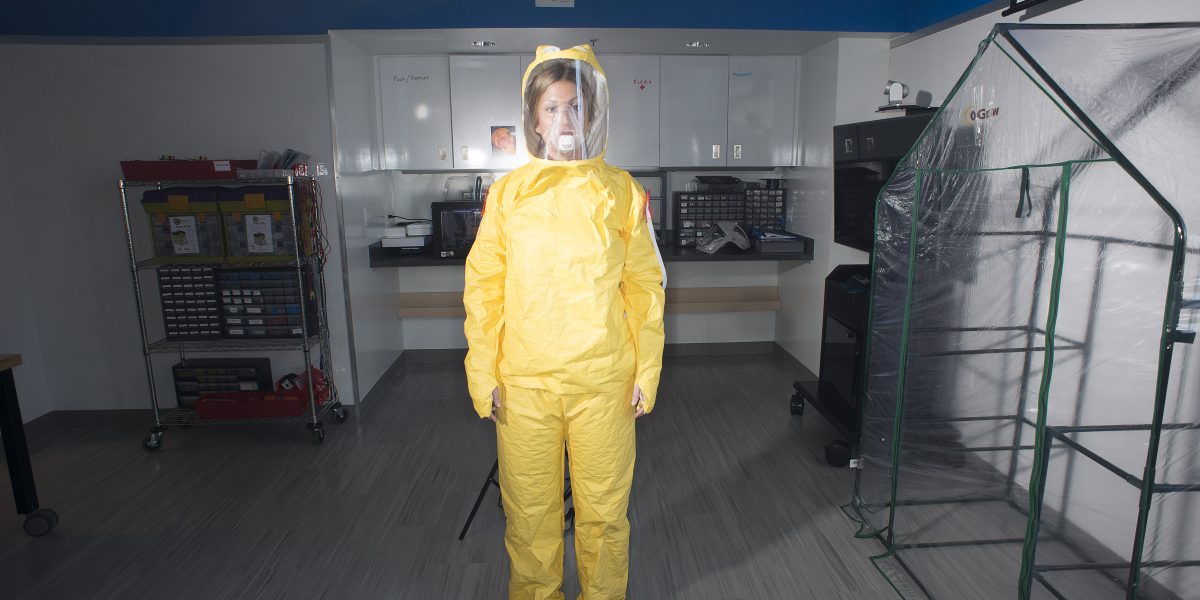News & Community
Changing Suit
A Baltimore brainstorming session yields better protection for Ebola caregivers.
In late October, 65 people from all walks of life convened at The Johns Hopkins University for a weekend hackathon. But rather than debugging the latest software, the task at hand was designing a better personal protective equipment (PPE) suit.
The suits, used in medical emergencies such as the recent Ebola outbreak in West Africa, have many virtues, but many flaws as well. They are incredibly hot, difficult to put on and take off, provide poor visibility, and have coverage gaps that can expose health-care workers to pathogens.
Dr. Harshad Sanghvi, vice president of innovations and medical director at the Hopkins-affiliated global health organization Jhpiego, was especially concerned after learning that 16 health-care workers trained by Jhpiego had died in the Ebola outbreak. “We felt that if we are going to send some of the brightest of our people to fight any disease, we have an incredible responsibility to make sure they remain safe,” he says.
Jhpiego teamed up with Hopkins’ Center for Bioengineering Innovation & Design (CBID) to host the hackathon, welcoming participants from the fields of public health, technology, academia, and fashion, among others. At the end of the weekend, the group had a suit that was cooler, easier to don and doff, and more protective.
Admits Youseph Yazdi, the executive director of CBID: “I was amazed. I wasn’t sure that the hackathon event would come up with anything new.” The result was entered in a design competition sponsored by U.S. Agency for International Development (USAID), and announced as a winner in December.
Now they are further testing the suit and will start production soon. Both Sanghvi and Yazdi attribute the breakthrough to what Sanghvi terms a “meeting of unlike minds.” Agrees Yazdi: “If you want something new, you have to ask a broader group of people with fresh ideas.”
